For the average person, cockles and clams may just seem like they’re variations of the same thing. It wouldn’t be totally inaccurate but cockles and clams have notable, important differences that are worth knowing about.
Cockles vs. Clams – What is the Difference?
Cockles vs Clams – What is the Difference?
Cockles and clams are both marine shellfish with two-part hinged outer shells that house a soft invertebrate inside. The difference between cockles vs clams is that clam shells are varied and come in different shapes and sizes while cockle shells are specifically more rounded and heart-shaped, with a ribbed texture. While clams can be found both in saltwater and freshwater, cockles only dwell in saltwater. Cockles are considered a type of clam but clams are part of a much broader category.
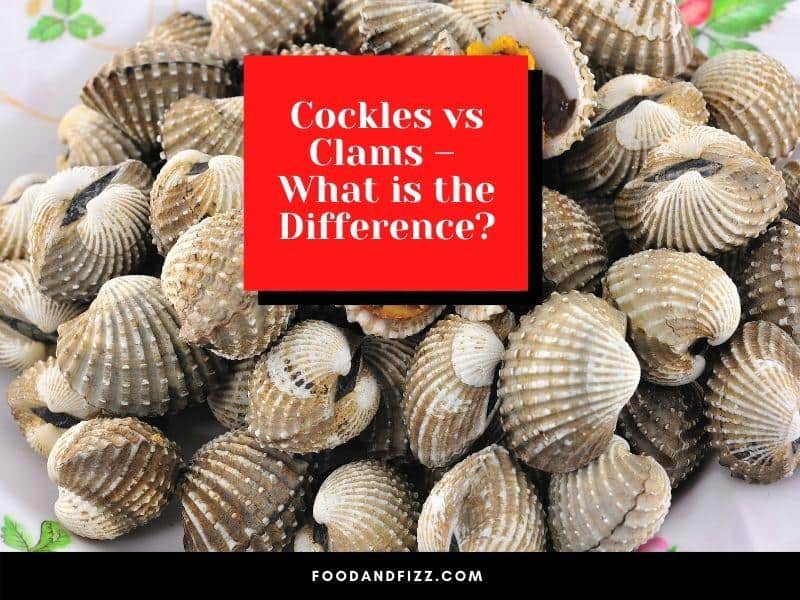
All About Clams – A Closer Look
What is a Clam?
A clam is what’s called a bivalve mollusk, which means that it has two hard external shells of equal size connected by a hinge.
Inside the shells, there lives a small, soft organism with no eyes and no backbone, but has a mouth, heart, kidney, stomach, nervous system, and a muscular foot. This muscular foot is what allows them to burrow in the sand or mud, which they quite like to do.
Burrowing in the sand is something that clams do in order to protect themselves, and they spend most of their lives here. Clams live in both freshwater and saltwater, and in the ocean, they live in the intertidal zone. During high tide, they are covered by the water but are exposed when low tide hits.
During this period, they use their muscular foot to burrow in the sand and can burrow to a depth of 11 inches or more.
While buried in the sand, they use little tubes that look like necks (called “siphons”), to get some seawater into their systems so that they will be able to breathe, and also inhale some plankton for food at the same time.
Most clams are dioecious, meaning that they need both a male and a female clam to reproduce. Male clams release sperm into the water which gets drawn into female clams who have eggs inside them, and fertilization occurs.
Clams are a broader category of mollusks and can come in varying shapes and sizes, from small to large. They can be round, elongated, or rectangular. They can be as small as a millimeter or as big as four feet!
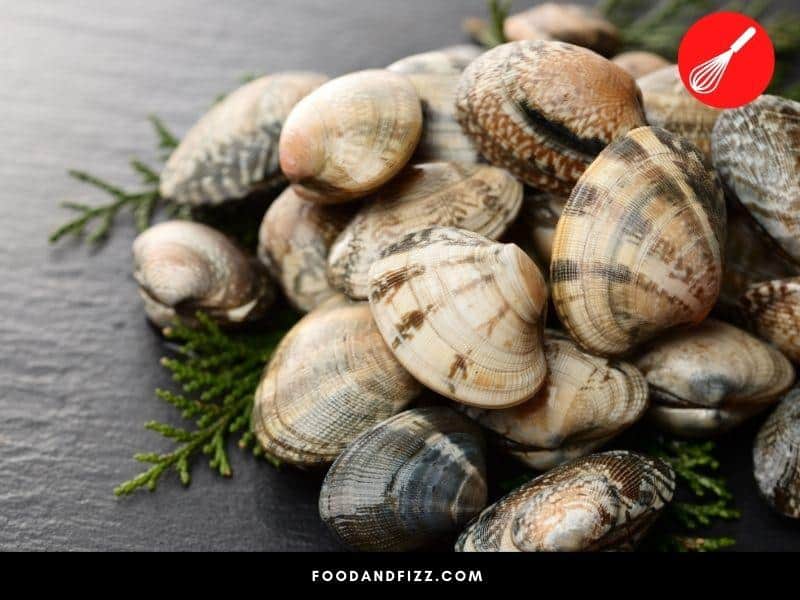
Popular Types of Edible Clams
There are many species of edible clams but not all can be easily sourced. The following are some examples of the most common types of edible clams.
1. Quahogs
Also known as Chowder clams, quahogs have a larger and hardier flesh that makes them popular for longer stewing. They are also called “hard-shell” clams and are found all over the east-coast running from Canada all the way to Florida.
2. Pacific Geoducks
In the burrowing category of clams, Geoducks (pronounced “gooey ducks”) are considered the largest. Found on the other side of the country along the Pacific Northwest, they can weigh up to 8 pounds and have siphons that can be up to 4 feet long, with a lifespan of up to 140 years.
They are considered a delicacy and are usually served raw as in ceviche or sashimi, or in hotpots.
3. Manila Clams
Manila Clams, also known as Asari clams, are among the most cultivated clams in the world. They originally came from Japan and are now found on the Pacific west coast.
They are smaller at about 2 inches in diameter and are sweeter in taste compared to other clams. They are perfect in steamed clam dishes or served in broth or a butter sauce.
4. Razor Clams
They are named as such because they actually look like razors. The Atlantic variety has a softer shell and is thinner and more delicate and is more often prepared by simple grilling or steaming.
The Pacific variety is longer in shape and is meatier compared to its Atlantic counterpart.
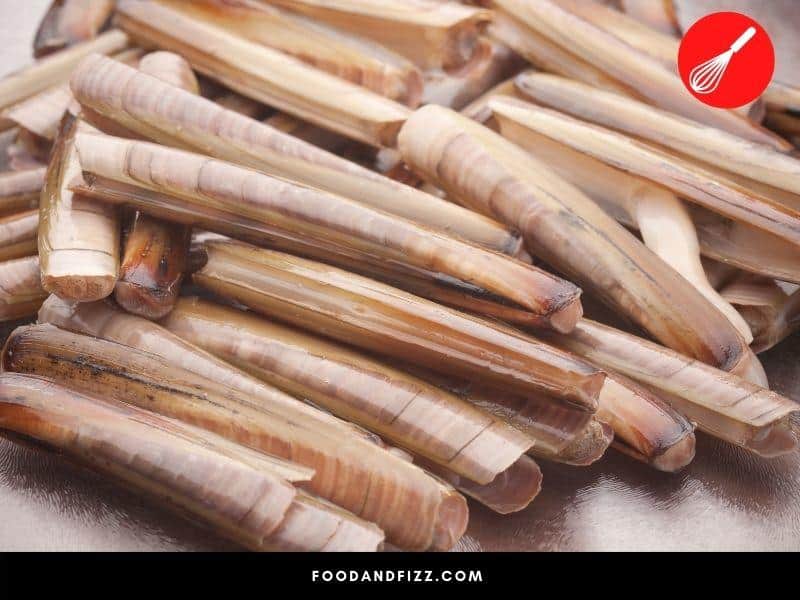
5. Soft-shell Clams or Steamer Clams
Steamer clams are a staple in New England but they are found on both sides of the country. Compared to hard-shell quahogs, their oval-shaped shells are softer and more delicate.
When out of the water, their siphons actually protrude and are exposed, which makes them more perishable, and is the reason why they are always cooked prior to consumption.
There are many other varieties of clams you may see on the market and in restaurant menus, some of those we mentioned above even have more sub-variations, which just shows just how big this category is and how many different kinds there are that exist, opening up so many possibilities in culinary use.
How to Prepare Clams for Cooking
Unless you like sandy clams, clams must be filtered and prepared prior to cooking. As they burrow in the sand for most of their lives, they do accumulate a lot of it in their bodies.
To get rid of these, you can leave them to soak in fresh water for 20 minutes. “Breathing” in the freshwater will help purge them of the excess salt and sand. Afterward, they may be removed and sandy water may be discarded.
After this, they may be brushed and scrubbed to further remove any other visible ocean debris.
Popular Ways of Preparing Clams
Clams are not just for clam chowder. They can be steamed, grilled, added to pasta sauces, served in a broth with a variety of herbs and spices, and even used for dips. Clam juice can even be used to make drinks and cocktails. Read: “How Long Does Clamato Juice Last After Opening?” on the site.
Clams are very versatile and depending on the type of clam you have, can be cooked in many different ways. Some innovative recipe ideas are found here.
All About Cockles
What is a Cockle?
A cockle, like a clam, is also a bivalve mollusk with two shells connected by a hinge, with a soft invertebrate inside that also has similar anatomy, including the muscular foot.
The difference is that cockles have a specific look to their shells. While clam shells vary in size and shape, cockle shells are specifically more rounded and heart-shaped, and have a ribbed texture to them.
Cockles also like to like to burrow in the sand, but unlike clams, they typically prefer deeper waters, and saltwater at that.
Cockles are hermaphroditic, meaning they can reproduce by themselves, unlike clams that are dioecious and need a male and a female to reproduce.
Cockles are considered to be a part of the broader clam family.
How to Prepare Cockles for Cooking
Like clams, they also need to be cleaned very well and filtered to get rid of sand and debris. Soaking in fresh water allows them to purge the sand and the excess salt from their bodies.
Can I Substitute Cockles for Clams?
Cockles are smaller than the typical clam, and you would probably need a lot more of them if you wish to make them the star of the show in your cooking. However, due to similar tastes and textures, they can successfully be substituted for each other in most culinary applications.
Cockles vs Clams – What is the Difference?
It is easy to get confused between clams and cockles as they look quite similar.
Cockles and clams are both classified as marine bivalve mollusks or shellfish that have two-part shells with a hinge.
While they have these similarities, they also have notable differences. We’ll explore a few of them below.
1. Habitat
Both clams and cockles are water-dwelling creatures, but they differ in the kind of aquatic environment they thrive in. Clams like freshwater environments as much as they do saltwater environments, though they prefer to live much closer to the seashore. This is why clams are more common and pretty easy to spot.
Cockles, on the other hand, only thrive in saltwater and prefer to be in deeper waters compared to clams. This is why they are more difficult to find and are much rarer.
2. Shell Pattern and Size
Clams can come in different shapes and sizes – round, elongated, and rectangular. They can be small or large. Cockles, on the other hand, are smaller than clams and have a more rounded, heart-shaped shell with an embossed, ribbed texture.
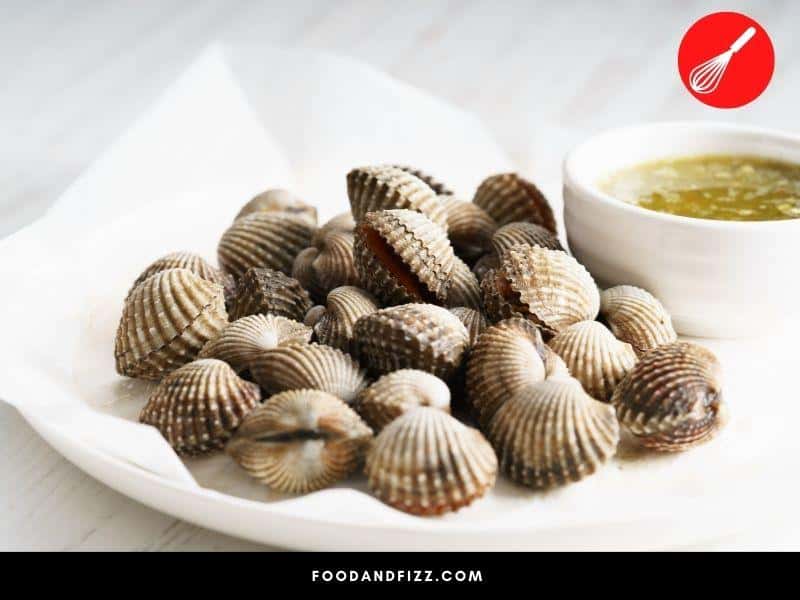
3. Category and Classification
Clams are part of a broader category or taxonomy, while cockles are part of a smaller category. All cockles are considered to be part of the clam family, but not all clams are cockles.
4. Reproduction
Most clams are dioecious, meaning that in order to reproduce, they need a female egg to be fertilized by a male, while cockles are hermaphroditic, which means they contain both female and male elements needed to reproduce and can therefore reproduce much more quickly.
Those are just some of the important differences between clams and cockles, differences worth noting to be able to distinguish them the next time you encounter either kind.
Are Cockles and Clams Safe to Eat?
There are risks associated with consuming shellfish in general, especially raw or undercooked shellfish. These can be due to toxins and pathogens found in contaminated waters or toxins produced due to improperly handled and improperly stored shellfish.
Usually, harmful bacteria can be killed by heat and cooking, but some toxins produced by those bacteria can be heat-resistant and can bring about a food-borne illness ranging from mild to severe, and sometimes, can even be fatal.
Some symptoms of shellfish poisoning, which can occur within hours to days of exposure, include:
- Nausea
- Vomiting
- Numbness
- Headaches and dizziness
If you are allergic to shellfish, anaphylaxis can also occur and is a serious medical emergency.
Raw clams and cockles also put you at risk for hepatitis and other viruses.
Because of the risks, it is important to exercise caution in consuming cockles and clams, especially raw ones, and make sure that you only source them from reputable and safe sources, and consume them in places where you are assured of safe and proper handling.
Conclusion to Cockles vs Clams – What’s the Difference?
Cockles and clams may look similar and can be substituted for each other in a lot of recipes, however, they have distinct differences that are worth noting.
Regardless of whether you prefer clams or cockles, it is important to always source them from reputable sources and to always exercise safe food handling and sourcing procedures to ensure your safety.
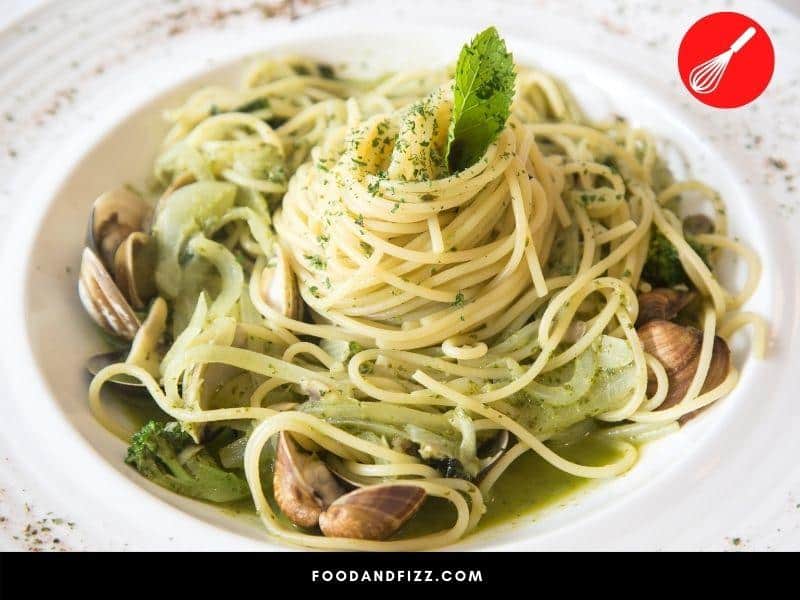
Frequently Asked Questions to Cockles vs Clams – What’s the Difference?
Can You Use Cockles Instead of Clams?
Cockles are smaller than most clams so if substituting, you would probably need more cockles than the clams called for in recipes, but it would be a successful substitute.
What is a Cockle?
A cockle is similar to a clam in that it has two shells connected by a hinge, with a soft invertebrate inside. Cockles though, are smaller and have a rounded, heart-shaped shell with a ribbed texture.
Do Clams and Cockles Taste the Same?
Cockles are sweeter and less briny compared to clams. They are also rarer and much less common than clams.

